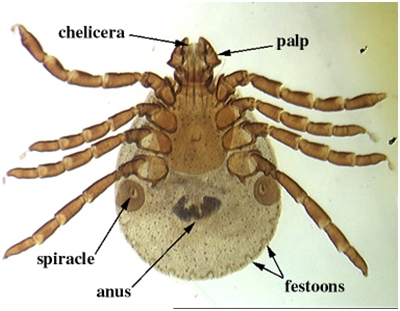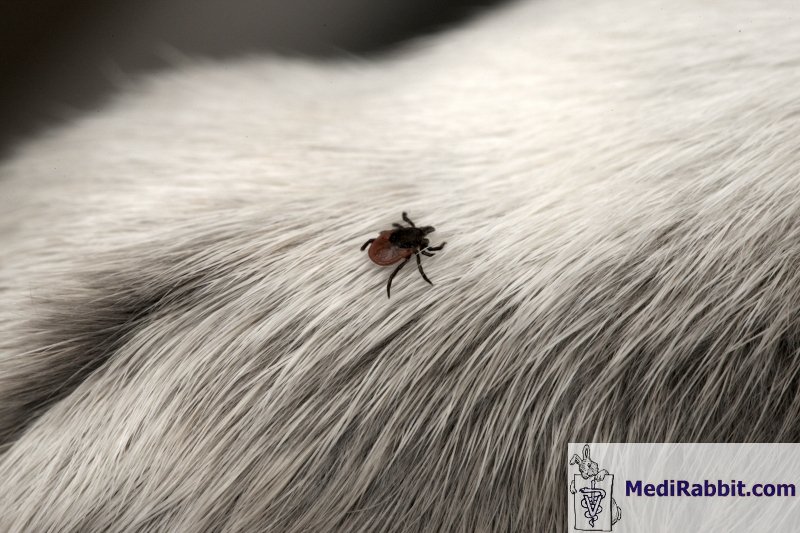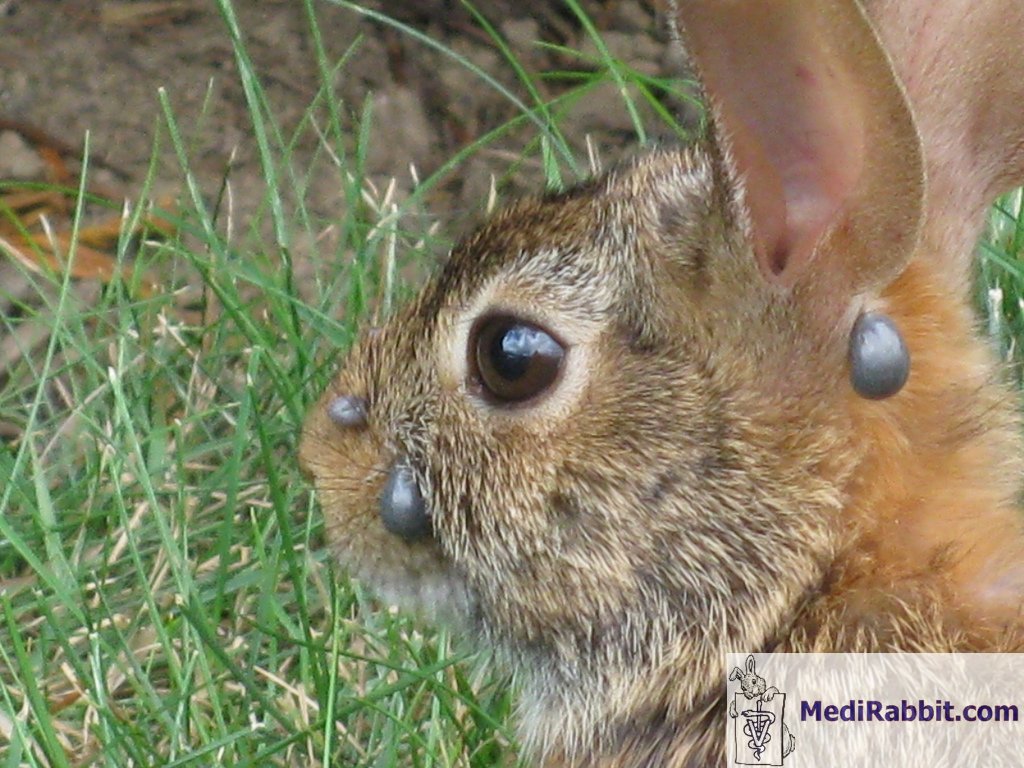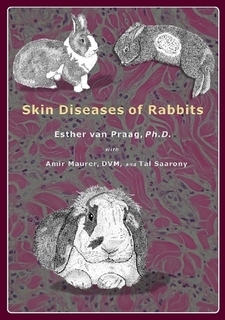Teken
Esther van Praag Ph.D.
MediRabbit.com wordt uitsluitend gefinancierd door gevers.
Elke donatie, ongeacht hoe groot, wordt gewaardeerd en zal helpen bij de voortzetting van het onderzoek van de medische zorg en de gezondheid van konijnen.
Bedankt
|
Wilde konijnen worden regelmatig geplaagd door teken,
zowel door de harde, door een schild beschermde teek (ixotid), alsmede ook
door de zachte teek (argasid). Haemophysalys leporis palustris is wordt het
meest gevonden bij de Amerikaanse katoenstaart (Sylvilagus sp.) en de
haas (Lepus sp.), maar komt ook bij konijnen voor:
• Ixotid ticks are
protected by a hard shield and their mouthpieces can clearly be seen. They
include commonly found ticks all over the world, like Ixodes
sp., Amblyomma sp., Boophilus
sp., Rhipicephalus sp., and Haemophysalis sp. All
can affect rabbits.
• Argasid ticks are soft ticks whose mouthparts and “false
head” (capitulum) cannot be seen when viewed from
the dorsal side. They live essentially in arid regions on the American
continent, Africa and India. Members of the Otobius
sp., and Ornithodoros
sp. can plague rabbits.
Ticks are small (less than 5 mm in length) and have a
reddish or brownish color. Their life cycle is complex. Wild rabbits,
cottontails and hares are commonly plagued by Haemophysalys
leporis palustris.
This tick has typically three developmental phases, which occur on three
different hosts. After feeding blood or serum from its host, the tick larva
will fall to the ground, in order to molt. The next stage larva or nymph will
find a new host to feed on. Once adult, the tick will hide in the vegetation.
When it detects the presence of a host thanks to organs sensing its release
of CO2 release and body temperature, it will crawl onto its fur
and start engorging with blood. During the feeding, the tick will release
saliva and enzymes into its host, to keep the bite open. During this phase,
tick-borne diseases can be transmitted.
Zachte teken kunnen
ook de haasachtigen besmetten. De meest voorkomende teek is de rode Otobius
lagophilus. Alleen larven en nimfen worden bij konijnen gevonden,
voornamelijk op de wangen en boven de snorharen. Deze teek voedt zich met
lymf. Evenals de harde teken, kunnen ook déze besmettelijke ziektes
verspreiden, zowel onder konijnen zelf als van konijn naar andere zoogdieren
en naar mensen.
Klinische verschijnselenTicks are usually found while inspecting the fur of a
rabbit. Preferred locations are the ears, the area between the ears, the neck
and the dewlap of female rabbits.
Severe infestation
can lead to macrocytic (enlarged red blood cells) normochromic (referring to
a red blood cell of normal color, usually because it contains the right
amount of hemoglobin) anemia.
BehandelingAs much ticks as possible should be carefully removed with forceps and
killed rapidly by immersion in an acaricide
solution, alcohol, or chloroform solution. This avoids eventual contamination
or spreading diseases carried by the tick host. If the presence of further ticks is noticed, or if the infestation is
severe, administration of ivermectin (0.4 mg/kg, SC, once) will
successfully get rid of the ticks. Although successfully killing ticks, the use of insecticide products
containing pyrethrin, permethrin, amitraz must be
avoided, due to their secondary toxic effects in rabbits. Fipronil
is forbidden for use in rabbits. Severe tick infestation can lead to anemia and death. When observed in
a rabbit, blood transfusion from a healthy rabbit can be attempted. Verdere infrmatie over teken bij
konijnen is hier te vinden: by E. van Praag, A.
Maurer and T. Saarony, 408 pages, 2010. AcknowledgementsThanks are
due to David Fulmer for the permission to use the picture of an infested
cottontail. Further ReadingsMcGowan
MJ. Relationship between skin-sensitizing antibody production in the snowshoe
hare, Lepus americanus, and infestations by
the rabbit tick, Haemaphysalis leporispalustris (Acari: Ixodidae). J
Parasitol. 1985; 71(4):513-5. |
e-mail: info@medirabbit.com







